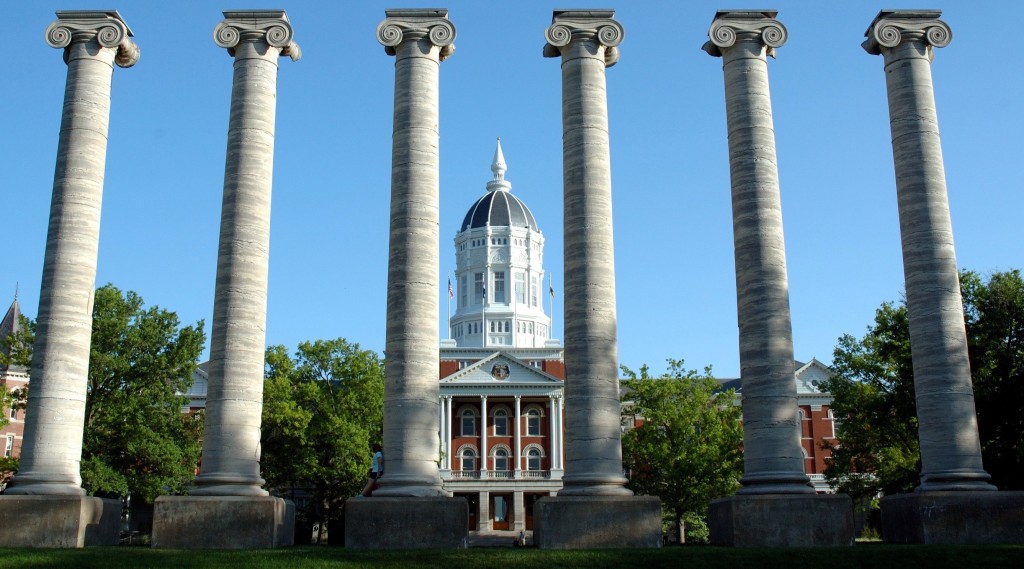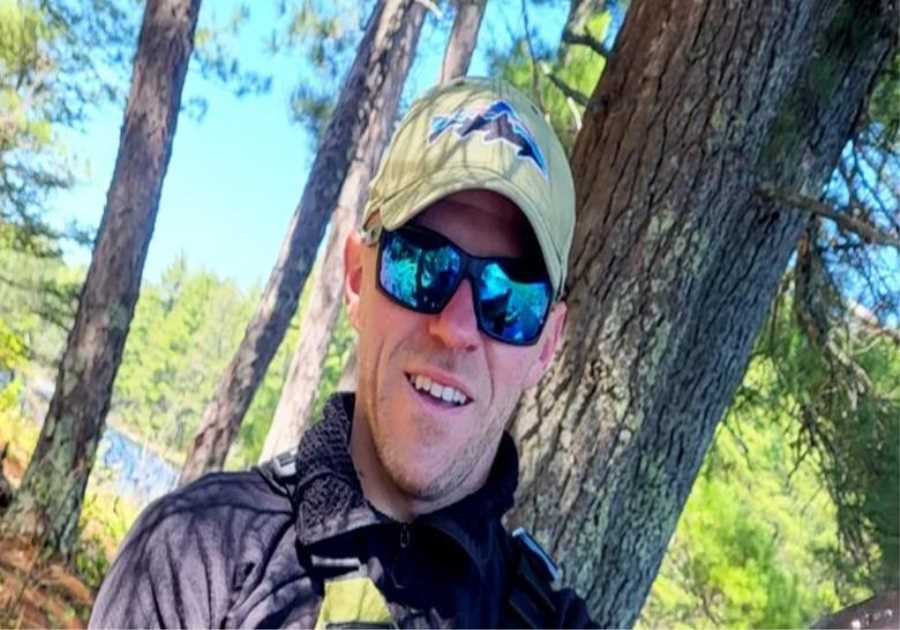||

While racism and threats to the physical safety of black students are the most important issues amid the unrest at the University of Missouri, a controversy around the rights and responsibilities of the media has lingered all week.
As you know, the chancellor of the University of Missouri and the president of the state system resigned amid growing protests over the administration’s slow and tone-deaf response to a series of racist incidents and what black students say is an unsafe and hostile atmosphere for them on campus.
Here’s a timeline of the growing tensions on campus at the Maneater, the student news outlet, and here’s a New York Times story about the two resignations. This Mic.com piece about hunger striker Jonathan Butler lays out the grievances against system president Tim Wolfe, who resigned Monday.
The media controversy arose from an incident Monday, when protesters, led by the group Concerned Student 1950—whose name references the year blacks were finally admitted to Mizzou—were celebrating the resignations on the Mel Carnahan Quadrangle on campus and vowing to continue to fight. “This is just a beginning in dismantling systems of oppression in higher education, specifically the UM system,” Marshall Allen of Concerned Student 1950 told CNN.
Tim Tai, a Mizzou student photojournalist who was on assignment for ESPN, got into a confrontation with protesters near the tent city they’d set up as a “no media safe space,” on the quad. The incident was captured on video by Mark Schierbecker, and that video went viral.
A few of the people in the video who tried to keep Tai and Schierbecker away from protesters were Mizzou staff or faculty. Some of them later apologized and may face discipline. But to me the most interesting aspect of the incident was the argument between Tai and the protesters, which in the days since has been taken up across the internet.
The protesters argue that Tai, and all media, should respect their desire to keep the media out of their “safe space.” Tai’s argument can be summed up by his comment at 1:45 of the video: “The First Amendment protects your right to be here, and mine.” He mentions at one point that there’s a state law specifically declaring the Carnahan quad a public space.
Tai, whose photos were published by ESPN.com, was lauded by many journalists around the country for keeping his cool while defending his rights as a journalist. On the other hand, the arguments made by Tai and those who supported him were widely denounced by others, who argued that whatever the rights of journalists, they have an obligation to treat subjects, particularly subjects who are in danger or pain or both, more respectfully. “I think we underestimate how deeply broken our (media) relationship is w/minority communities,” tweeted Washington Post reporter Wesley Lowery.
Tai, I should note, said on several occasions that he was uncomfortable having become part of the story, and that his squabble with protesters was not nearly as important as the larger issues.
I’m a little perturbed at being part of the story, so maybe let’s focus some more reporting on systemic racism in higher ed institutions.
— Tim Tai (@nonorganical) November 10, 2015
It’s also worth noting that the protesters changed their approach to the media on Tuesday.
#ConcernedStudent1950 Protestors have taken down the anti-media signs and are handing out a PSA welcoming media. pic.twitter.com/jAqgDAzqGk
— Mark Kim (@MarkJKim_) November 10, 2015
Kyle Stokes, a public radio reporter in Seattle who went to Mizzou, wrote a blog post headlined Why We Were There that laid out the media argument—that the media is tasked with being on site to get the true story and tell it to the public, which demands to know it.
Honestly, we saw you gathered in a public place. Although people typically do want to speak to the media when they’re gathered in this way, we know you are under no obligation to do so. But in a public place, journalists are going to do what they are paid to do: ask the question and take the picture. And we cannot ever apologize for that.
My first reaction to this confrontation Monday was to side squarely with Tai. I found the actions of the protesters disturbing. I thought their argument that they had a right to exclude anyone from the quad because they’d declared it their space was absurd.
I also thought they were being undemocratic, that having won a victory, they were using their newfound power in a bullying way. In the closing seconds of the video, a mass of protesters walking in a close group push Tai out of the scene completely. “It’s our right to walk forward, isn’t it?” one woman says. “I believe it’s my right to walk forward.” I’ve known fourth-grade bullies who were more subtle than that.
I tweeted in support of a piece that argued much the same thing.
Good piece on the disturbing behavior of some protesters today. Simply put: This is violence. https://t.co/fv1Iw6Wq1F
— King Kaufman (@king_kaufman) November 10, 2015
And then something even more disturbing to me happened. That tweet got a few dozen likes and retweets, and everyone who liked it or retweeted it whose race was apparent to me was white. And it’s not like all my followers are white.
Meanwhile, I found myself arguing on Twitter with black journalists I respect. One, who doesn’t like it when other writers embed her tweets in their stories, wrote, “Look at it from their perspective. If subjected to obscene harassment for months bc of protesting, would I want 2 b bothered?” and argued that a good reporter should respect being told no, consider the motivations, and find other ways to get the story.
A good summation of the argument against those of Tai and Stokes is made by Melissa McEwen at the Shakesville blog in a post headlined Stop. Just. Stop.
But in this country, with our reflexive reverence for a policy of “free expression,” as if speech exists in a void, we’re more worried about the supposed “intolerance” expressed by marginalized people who draw boundaries in defense of their own safety, because a minor restriction on a privileged person’s unfettered right to engage in hate speech, or assert their “right” to access to marginalized people’s spaces and lives, is considered a more burdensome encroachment on freedom than the right of people at whom hate speech is directed to live a life free of rhetorical terror.
I’m not sure where I stand at this point. One thing I’m sure of is that I’ve had to rethink some of my assumptions. The writer whose tweets I didn’t embed above has argued that tweets by people who aren’t public figures should not be considered fair game for journalists to reproduce. This is not a new or unique idea. Here’s a story by Amanda Hess of Slate from last year about a controversy around the privacy of public, which is to say unprotected, tweets.
The idea that journalists should respect the “privacy” of tweets, which are published online and have been ruled public, is similar to the idea that journalists should respect the privacy of a space carved out by a group of people, even if that space is on public ground.
I have problems with both of those ideas. But I have a better understanding of them than I had a week ago, and, as you can see in these last few paragraphs, I’m more likely to respect the requests of those who subscribe to them than I used to be.
Social media is changing notions and definitions of what is public and what is private. Those definitions are also subject to change in what people my age tend to call the real world—as if social media weren’t part of the real world. We don’t all have to agree on the definitions. But a smart, ethical reporter has to understand that those disagreements are real, and worth considering.
Here’s a lot more good reading on some of the angles around this subject:
DEAR READER: On a historic day for MU, protest against media wasn’t most important, by Tom Warhover, Columbia Missourian
There’s a good reason protesters at the University of Missouri didn’t want the media around: Students wanted to create a safe space from not only the racism they encounter on campus, but the insensitivity they encounter in the news media, by Terrell Jermaine Starr, Washington Post
Race and the Free-Speech Diversion, by Jelani Cobb, The New Yorker
The Mizzou Football Team May Be Just the Beginning: Don’t be surprised if more black athletes exert their political power for civil rights, by Jamelle Bouie, Slate
At Missouri, the invisible claim a victory, by Howard Bryant, ESPN
Mizzou Players Turned a Social Movement into a Business Decision—and Won, by Greg Couch, Bleacher Report
How a Journalist Covering the Mizzou Protests Became a Political Pawn: Conservatives have latched onto Tim Tai as a means of discrediting the protesters, by Charles P. Pierce, Esquire
What those press-blocking Missouri protesters have in common with GOP candidates, by Philip Bump, Washington Post
What the Missouri Protests Say About Where the Media is Now, by Mathew Ingram, Fortune
Mizzou, Yale and Free Speech, by Nicholas Kristof, New York Times
Photo of the Columns at University of Missouri by Adam Procter/GNU Free Documentation License.
||-----------------------------------------
By: King Kaufman
Title: The Mizzou protests showed changing views of the media and privacy
Sourced From: blog.bleacherreport.com/2015/11/13/the-mizzou-protests-showed-changing-views-of-the-media-and-privacy/
Published Date: Fri, 13 Nov 2015 14:45:55 +0000
.png)





